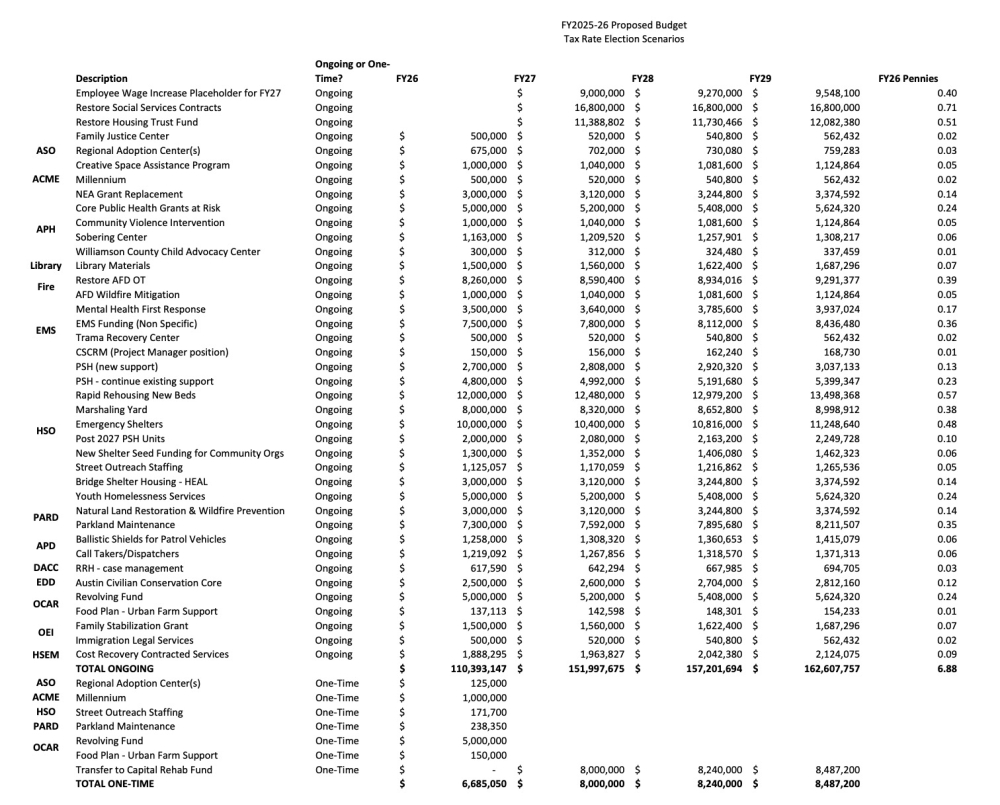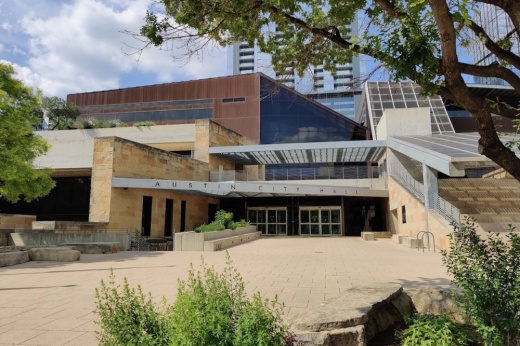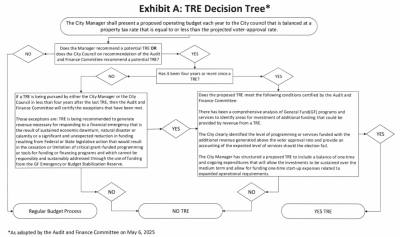The setup
City Council is now considering Austin's next budget for fiscal year 2025-26 as proposed by City Manager T.C. Broadnax. Austin's fiscal years start in October.
While Broadnax's budget is balanced for the next two fiscal years, a TRE has been floated given mounting financial constraints like federal funding losses and declining local tax revenue. With deficits still projected by the late 2020s, a higher tax rate could support additional spending and avoid cuts to community and council priorities.
Under a 2019 state law, a TRE is required if cities seek to raise more than 3.5% in added property tax revenue for operations year-over-year. The proposed FY 2025-26 budget falls under that cap, while any higher tax rate would move the city to seek voter approval.
Council members have been preparing for a TRE since earlier this year, setting a formal policy this spring to guide the process while limiting such elections to once every four years. If one is called this fall it'd be Austin's first for general city spending purposes; voters approved a TRE in 2020 specifically for the Project Connect transit system that remains in development.
The specifics
The currently outlined FY 2025-26 tax rate of $0.5276 per $100 of assessed property value is 5 cents higher than this year's. It would raise the "typical" homeowner's annual tax bill by more than $150, a nearly 8% jump, based on Austin's projected median home value with a homestead exemption.
In July, council asked for a breakdown of possible tax election scenarios that'd add up to 8 cents to that proposed FY 2025-26 rate. Those options would all further increase taxpayer costs and bring in tens of millions of dollars.
On the low end, a 1-cent TRE would represent a nearly $200, or 10%, property tax increase over this year for the owner of a median-valued homestead, according to the city. An 8-cent TRE, the maximum scenario now under review, would increase property taxes by almost $500, or more than 24%.The costlier TRE options are expected to better stabilize city services and finances going forward.
A 1-cent addition to the proposed FY 2025-26 tax rate would support just over $26 million in one-time spending, like wildfire mitigation efforts and homeless shelter and housing programs, for just the year ahead. The increase wouldn't help stabilize city reserves in the long run.On the high end, calling an election for an 8-cent increase would bring in more than $100 million annually through the 2020s for dozens of ongoing initiatives and several one-off items, while maintaining reserve levels in line with city financial policy.

Council members said they're moving through TRE deliberations in an intentional way under their newly approved framework, and have said the tax hikes are likely to continue on a regular basis under the state's 3.5% revenue cap.
“We’re going through uncharted waters, to a large extent. Ultimately, I think tax rate elections will have to become almost a political feature of Texas in the future," council member Chito Vela said.
Officials heard brief public testimony on the initial TRE options July 22 with several local advocates supporting the 8-cent option to fund the broadest range of community services, like homelessness response. Residents also noted the city's financial challenges ahead at a time of decreased federal support for government programming.
“Let’s be clear: The investments in the TRE scenarios are not luxuries or extras, these are life-lines for poor people in our city. ... These are the programs that will help them survive and heal, and without them the entire city feels the consequences. It’s not just a moral path, this is the rational one," said Paulette Soltani, co-director of the homelessness and criminal justice advocacy group VOCAL-TX.
Looking ahead
Council members will vote on the maximum tax rate they'll consider for FY 2025-26 on July 31. That required step under state rules doesn't lock officials into a final tax rate; that decision will come during budget approval in August. Mayor Kirk Watson said whatever upper limit is set this month will account for a potential TRE.






